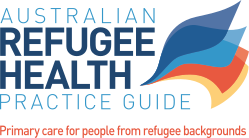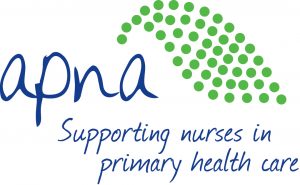
Anaemia, Iron Deficiency, and Other Blood Conditions
Nadia Chaves, Georgia Paxton
Recommendations
- Offer screening to all people from refugee-like backgrounds for anaemia and for other blood conditions with a full blood examination (FBE).
- Offer screening for iron deficiency with serum ferritin to all children and to women of childbearing age and consider this in patients with unexplained fatigue.
- Replace iron if ferritin <15µg/L and/or when clinical and haematological features indicate iron deficiency anaemia.
- Educate about iron-rich diet and avoid excessive dairy intake in children
- Investigate and treat causes of anaemia
- Consider screening for vitamin B12 deficiency if arrival <6 months with a history of at least several years of significantly restricted food (especially meat) access e.g. patients from Bhutan, Afghanistan, Iran or the Horn of Africa; or if vegan diet.
- Treat B12 deficiency if serum active B12 <35pmol/L or <reference range for children with oral or IM supplementation. Exclude concomitant folate deficiency. Consider Helicobacter pylori infection.
Overview
There are food security risks in many refugee-source countries,252 as prolonged food deprivation and inadequate access to nutritious food and clean water are common. After arrival in Australia there still may be issues of food insecurity, 253,254 poor access to healthy foods and consequent under-nutrition. Specific issues include: low weight and/or height-for-age in children, vitamin deficiencies, iron deficiency and anaemia. As well as the potential for under-nutrition, there are increasing problems with dyslipidaemia and obesity and the associated risks of developing non-communicable diseases (NCDs chapter 14). The period of early settlement is a window for health promotion about nutrition.
Anaemia (defined as a low blood haemoglobin concentration with ‘normal’ ranges depending on gender, age and pregnancy status) has been reported in adults from refugee-like backgrounds in Australia. The prevalence is estimated at 7–20%, 39,43,45,255 but is greater in young children (23–39%)43,255 (see prevalence tables for more information). Anaemia is a major cause of, or a contributor to, morbidity and mortality worldwide. In some settings up to 50% of patients with anaemia are iron deficient.256 Iron deficiency in children from refugee backgrounds in Australia and New Zealand ranges from 17% (36/216)45 to 33% (113/343).51
Iron deficiency anaemia occurs after iron stores become severely depleted. As well as the common causes in the Australian population such as pregnancy, breast feeding, menstrual blood loss, inadequate iron intake, and gastrointestinal blood loss,257 chronic infections such as hookworm, strongyloidiasis, Helicobacter pylori infection and chronic malaria can contribute. Iron deficiency, even without associated anaemia, may cause fatigue and hence affect productivity. Women of reproductive age and children are at particular risk of iron deficiency and iron deficiency anaemia because of greater iron requirements. It is important that women have adequate iron stores during their reproductive years, as iron deficiency in pregnancy increases maternal and perinatal mortality, and can cause cognitive and motor delays in children. Side effects of iron supplementation include gastrointestinal symptoms such as nausea, constipation or abdominal pain as well as the potential for overdose in children.258–262 In view of the high prevalence of anaemia and iron deficiency in people from refugee-like backgrounds, the fact that iron deficiency is easily treated, as well as published evidence for possible improvements in symptomatic fatigue in women 263 and for psychomotor development in children,264 we recommend screening for anaemia with full blood examination (FBE) in all patients and to consider excluding iron deficiency by determining serum ferritin concentrations in women of child-bearing age, children, and those with fatigue. FBE, rather than purely haemoglobin (Hb), is recommended because red cell characteristics may be useful in determining the type of anaemia, and differential white cell concentrations (e.g. eosinophils) are included.
Other haematological conditions
Congenital neutropenia. Neutrophil concentrations below normal Australian reference ranges occur in 25–50% of persons of African descent and in some groups from the Middle East.265 This is not a pathological condition but rather reflects a different ‘normal’ range. If the person seems well and has no associated clinical features like fever, gingivitis or skin infections, no further investigation is indicated.
Eosinophilia is defined as an absolute eosinophil count exceeding 0.6 x 109 eosinophils/mm3 and is apparent on FBE. Eosinophilia in this population may indicate the presence of a parasitic infection (see schistosomiasis, strongyloidiasis, and other intestinal parasites). Note: single-cell intestinal parasites (e.g. giardia) do not cause eosinophilia. Other causes of eosinophilia include allergies and medications.
Inherited anaemias. These include thalassaemias, G6PD deficiency and haemoglobinopathies. These are more common in people from Africa, Asia and the Middle East. Carriers are usually asymptomatic but often have mild microcytic hypochromic anaemia.
Lead toxicity. Elevated serum lead concentrations have been reported in up to 7–25% of people of African refugee-like background266,267 and in children from the Thai-Burma refugee camps267–270 especially in those aged < 6 years, although rarely to a level requiring chelation therapy. Screening for lead toxicity in Australian refugee populations is not recommended routinely but should be considered if there are symptoms of lead toxicity such as learning, memory, behavioural or cognitive dysfunction in children271 and when anaemia is unexplained.
Coeliac disease. Although there are no Australian data available in people from refugee-like backgrounds, the rates of coeliac disease in North Africa and the Middle East are apparently similar to rates in Western countries. The disease is rare in Sub-Saharan Africa and in East Asia.272
Vitamin B12 deficiency has been reported in refugees from Bhutan, Iran, Afghanistan, Iraq and the Horn of Africa in Australia 156,273,274 especially when there is poor access to food. This does not necessarily correlate with symptoms or even with macrocytosis, and the significance of such apparent deficiency, the requirements for replacing borderline deficiency, the effects of post-migration diets and possible impacts on long-term health in those from refugee-like backgrounds are currently unclear.275
Folate deficiency is uncommon in those from refugee-like backgrounds in Australia 43,273 but should be considered in new arrivals with food insecurity. As folate deficiency is uncommon in Australia due to the availability of fresh foods and vegetables, and the fortification of some foods, testing is not recommended.
History and Examination
Symptoms of anaemia may be subtle. They include lethargy, irritability, shortness of breath, poor growth, weakness and signs of cardiac failure. There may be a past history of malaria, worm infestations, Helicobacter pylori infection, haematemesis or malaena and patients may have occult chronic diseases, such as renal failure. The family history may indicate a predisposition to haemoglobinopathy.
Consider folate or B12 deficiency in those with a history of food insecurity, vegan diets or with symptoms suggestive of cognitive deficit, neurological or neuropsychiatric problems, developmental delay, and, if FBE indicates macrocytic anaemia.
Investigations
Full blood examination (FBE) in all. This is to screen for anaemia, eosinophilia and thrombocytopenia.
Serum ferritin for children and for women of childbearing age, people with vegetarian, especially vegan diets, those with a history of food insecurity, if anaemia is unexplained, and when iron deficiency is suspected clinically or from FBE results. Note: in patients with acute and/or chronic inflammatory and some other conditions, serum ferritin levels of up to 60-100µg/L257 do not exclude iron deficiency.
Consider B12 screening in those with suggestive symptoms, macrocytosis, or deemed at risk (e.g. vegan diet). Screening is generally not required for asymptomatic individuals with an adequate diet, or for those living in Australia for >6 months and who consume meat. Request serum B12, if this is abnormal or low a serum active B12 (holotranscobalamin) should be ordered.
Management
If FBE shows microcytic anaemia and/or low ferritin consider and treat underlying causes. Consider common parasitic infections and Helicobacter pylori infection. Educate patients and families about iron-rich diets.
Replace iron as per published guidelines.257,276 There are a number of formulations of iron and the dosage depends on weight in children. Intermittent oral iron (e.g. once or twice-weekly) is also an option and may reduce side-effects. Discuss side-effects (e.g. dark stools, constipation, gastrointestinal upset), safety and storage with patients and families. Use Easidose for picture-based dosing, if needed.
If iron-deficiency anaemia does not resolve within three months of oral iron supplementation and in those without a clear explanation for their anaemia, consider gastroscopy and colonoscopy especially in men and post-menopausal women, to exclude occult gastrointestinal bleeding associated with peptic ulceration, polyps, cancers etc.
B12 deficiency. In those with low or equivocal serum B12 concentrations, confirm deficiency by measuring active B12 (serum holotranscobalamin), and treat if the concentration is <35 (pmol/L).277 When B12 supplementation is indicated, consider and treat concomitant folate deficiency. Consider testing for helicobacter pylori infection.278,279 Replacement can be oral (cyanocobalamin 50–200 mcg daily, given between meals) or intramuscular (cyanocobalamin or hydroxycobalamin, IM 1000mcg given once.276 Dietary B12 intake following settlement in Australia is usually adequate and so it seems unlikely that ongoing supplementation is required, although this has not yet been studied.
The principles of healthy eating are universal and should be discussed with patients and their families.
Be aware of concurrent micronutrient deficiencies. These are outside the scope of this document but are summarised in the RCH guidelines.
Considerations in Pregnancy
Considerations in Children
Refer to a paediatrician if there malnutrition is suspected. Consider hospital admission if there is anaemia is severe (e.g. Hb < 6g/dl). Severely malnourished children should have anthropometry performed by a dietitian. Once the initial screen has been completed and treatment initiated, growth-monitoring should be offered.
http://www.rch.org.au/uploadedFiles/Main/Content/immigranthealth/TE%20V2.htm




